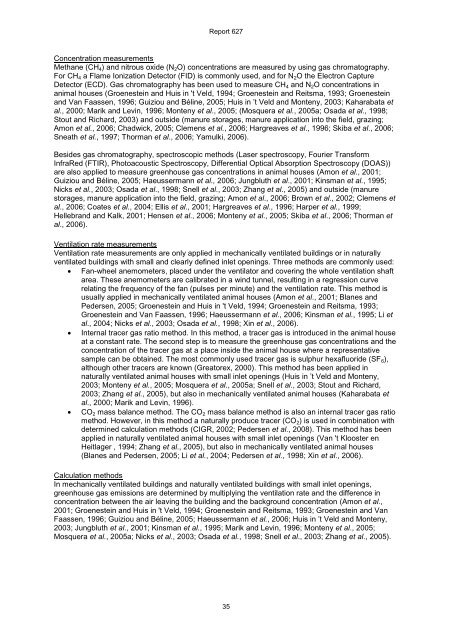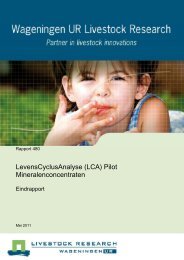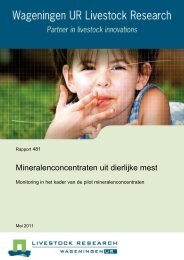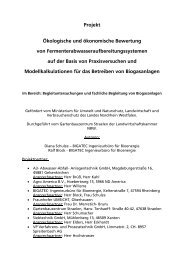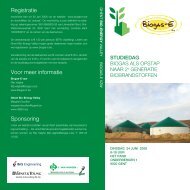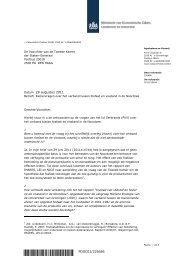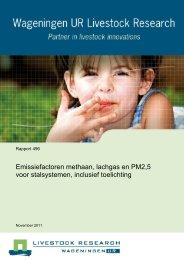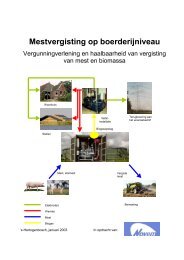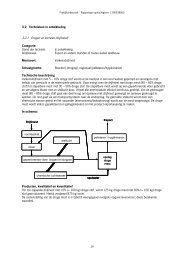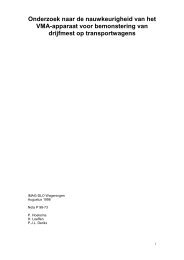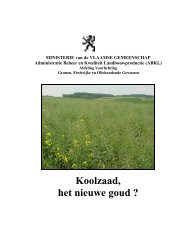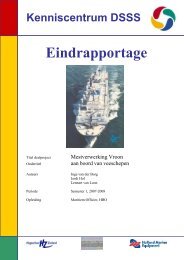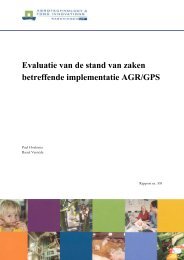Monitoring methane and nitrous oxide reduction by manure treatment
Monitoring methane and nitrous oxide reduction by manure treatment
Monitoring methane and nitrous oxide reduction by manure treatment
Create successful ePaper yourself
Turn your PDF publications into a flip-book with our unique Google optimized e-Paper software.
Report 627<br />
Concentration measurements<br />
Methane (CH4) <strong>and</strong> <strong>nitrous</strong> <strong>oxide</strong> (N2O) concentrations are measured <strong>by</strong> using gas chromatography.<br />
For CH4 a Flame Ionization Detector (FID) is commonly used, <strong>and</strong> for N2O the Electron Capture<br />
Detector (ECD). Gas chromatography has been used to measure CH4 <strong>and</strong> N2O concentrations in<br />
animal houses (Groenestein <strong>and</strong> Huis in 't Veld, 1994; Groenestein <strong>and</strong> Reitsma, 1993; Groenestein<br />
<strong>and</strong> Van Faassen, 1996; Guiziou <strong>and</strong> Béline, 2005; Huis in ’t Veld <strong>and</strong> Monteny, 2003; Kaharabata et<br />
al., 2000; Marik <strong>and</strong> Levin, 1996; Monteny et al., 2005; (Mosquera et al., 2005a; Osada et al., 1998;<br />
Stout <strong>and</strong> Richard, 2003) <strong>and</strong> outside (<strong>manure</strong> storages, <strong>manure</strong> application into the field, grazing;<br />
Amon et al., 2006; Chadwick, 2005; Clemens et al., 2006; Hargreaves et al., 1996; Skiba et al., 2006;<br />
Sneath et al., 1997; Thorman et al., 2006; Yamulki, 2006).<br />
Besides gas chromatography, spectroscopic methods (Laser spectroscopy, Fourier Transform<br />
InfraRed (FTIR), Photoacoustic Spectroscopy, Differential Optical Absorption Spectroscopy (DOAS))<br />
are also applied to measure greenhouse gas concentrations in animal houses (Amon et al., 2001;<br />
Guiziou <strong>and</strong> Béline, 2005; Haeussermann et al., 2006; Jungbluth et al., 2001; Kinsman et al., 1995;<br />
Nicks et al., 2003; Osada et al., 1998; Snell et al., 2003; Zhang et al., 2005) <strong>and</strong> outside (<strong>manure</strong><br />
storages, <strong>manure</strong> application into the field, grazing; Amon et al., 2006; Brown et al., 2002; Clemens et<br />
al., 2006; Coates et al., 2004; Ellis et al., 2001; Hargreaves et al., 1996; Harper et al., 1999;<br />
Hellebr<strong>and</strong> <strong>and</strong> Kalk, 2001; Hensen et al., 2006; Monteny et al., 2005; Skiba et al., 2006; Thorman et<br />
al., 2006).<br />
Ventilation rate measurements<br />
Ventilation rate measurements are only applied in mechanically ventilated buildings or in naturally<br />
ventilated buildings with small <strong>and</strong> clearly defined inlet openings. Three methods are commonly used:<br />
Fan-wheel anemometers, placed under the ventilator <strong>and</strong> covering the whole ventilation shaft<br />
area. These anemometers are calibrated in a wind tunnel, resulting in a regression curve<br />
relating the frequency of the fan (pulses per minute) <strong>and</strong> the ventilation rate. This method is<br />
usually applied in mechanically ventilated animal houses (Amon et al., 2001; Blanes <strong>and</strong><br />
Pedersen, 2005; Groenestein <strong>and</strong> Huis in 't Veld, 1994; Groenestein <strong>and</strong> Reitsma, 1993;<br />
Groenestein <strong>and</strong> Van Faassen, 1996; Haeussermann et al., 2006; Kinsman et al., 1995; Li et<br />
al., 2004; Nicks et al., 2003; Osada et al., 1998; Xin et al., 2006).<br />
Internal tracer gas ratio method. In this method, a tracer gas is introduced in the animal house<br />
at a constant rate. The second step is to measure the greenhouse gas concentrations <strong>and</strong> the<br />
concentration of the tracer gas at a place inside the animal house where a representative<br />
sample can be obtained. The most commonly used tracer gas is sulphur hexafluoride (SF6),<br />
although other tracers are known (Greatorex, 2000). This method has been applied in<br />
naturally ventilated animal houses with small inlet openings (Huis in ’t Veld <strong>and</strong> Monteny,<br />
2003; Monteny et al., 2005; Mosquera et al., 2005a; Snell et al., 2003; Stout <strong>and</strong> Richard,<br />
2003; Zhang et al., 2005), but also in mechanically ventilated animal houses (Kaharabata et<br />
al., 2000; Marik <strong>and</strong> Levin, 1996).<br />
CO2 mass balance method. The CO2 mass balance method is also an internal tracer gas ratio<br />
method. However, in this method a naturally produce tracer (CO2) is used in combination with<br />
determined calculation methods (CIGR, 2002; Pedersen et al., 2008). This method has been<br />
applied in naturally ventilated animal houses with small inlet openings (Van 't Klooster en<br />
Heitlager , 1994; Zhang et al., 2005), but also in mechanically ventilated animal houses<br />
(Blanes <strong>and</strong> Pedersen, 2005; Li et al., 2004; Pedersen et al., 1998; Xin et al., 2006).<br />
Calculation methods<br />
In mechanically ventilated buildings <strong>and</strong> naturally ventilated buildings with small inlet openings,<br />
greenhouse gas emissions are determined <strong>by</strong> multiplying the ventilation rate <strong>and</strong> the difference in<br />
concentration between the air leaving the building <strong>and</strong> the background concentration (Amon et al.,<br />
2001; Groenestein <strong>and</strong> Huis in 't Veld, 1994; Groenestein <strong>and</strong> Reitsma, 1993; Groenestein <strong>and</strong> Van<br />
Faassen, 1996; Guiziou <strong>and</strong> Béline, 2005; Haeussermann et al., 2006; Huis in ’t Veld <strong>and</strong> Monteny,<br />
2003; Jungbluth et al., 2001; Kinsman et al., 1995; Marik <strong>and</strong> Levin, 1996; Monteny et al., 2005;<br />
Mosquera et al., 2005a; Nicks et al., 2003; Osada et al., 1998; Snell et al., 2003; Zhang et al., 2005).<br />
35


